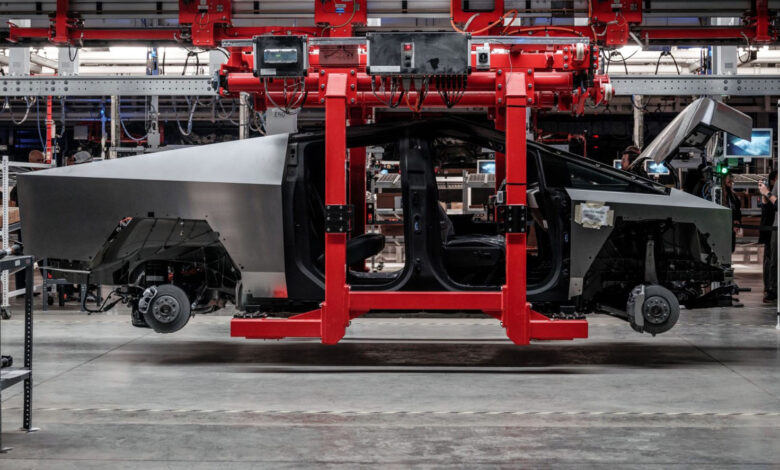Tesla says cheaper Model 2 will launch with Cybertruck’s 48V system as it keeps other specs for the announcement


The new 48V low-voltage system that makes the Cybertruck’s wire and rear steering functions possible will be carried over to future Tesla vehicles. One of those new Tesla cars with 48V system will be the cheap mass market Model 2.
The Cybertruck’s vaunted steer-by-wire and rear wheel turning systems get praised for the maneuverability they add to the big and heavy pickup in narrow garages or tight parking spots. Tesla will even issue an update to increase the Cybertruck’s ability to turn on a dime by bumping the current 3-degree turn of the rear wheels to the whopping 10-degree level.
What is not often mentioned, however, is that the rear wheel and drive-by-wire steering systems were made possible by the introduction of the new for Tesla 48V low-voltage architecture. It requires a lot less copper wiring and at the same time allows for smaller current to be sent to the motors turning the front and rear wheels, feats that wouldn’t have been possible with a 12V architecture.
Since the current automotive supply chain is built around a 12V architecture, Tesla had to develop and produce a lot of it from scratch. To avoid this in the future, it open-sourced the Cybertruck’s 48V architecture and sent it out to major automakers like Ford in an effort to make it the next-gen low-voltage standard and drive component prices down.
Model 2 voltage architecture specs
Tesla seemingly intends to move entirely to 48V architecture going forward, including for the mass market Model 2 Redwood that will be released in 2025. During the Q4 earnings call, Tesla was asked which of the Cybertruck’s gateway technologies will make it over to future models, and the 48V system was the first one that popped up in the Head of Vehicle Engineering Lars Moravy’s reply:
We’re obviously doing a lot of manufacturing innovation, as Elon said, for a next-generation vehicle. When you do something at that scale, you have to prove it out. You don’t just throw it on the line and just build it. So we’re going through those validation phases for all those new manufacturing technologies now. Sure, 48 volts is definitely something we want to carry forward, and it’s something we hope the industry adopts as well.
It is not clear if the 48V low-voltage system on the Model 2 will also be joined by the Cybertruck’s 800V fast charging high-voltage architecture that will allow charging times of 20 minutes on fast Superchargers. So far, the Model 2 Redwood’s battery is rumored to have a capacity of around 54 kWh which, given that it is expected to look like a “compact crossover” yet weigh 30% less than the Model 3, will likely put its range on a charge near the 300-mile ballpark.
Tesla didn’t say if the Model 2 will be powered by 4680 cells like the Cybertruck. Its high-volume bestsellers are powered by Chinese iron phosphate batteries and its partners like Panasonic have yet to ramp the 4680 production for the mass market.
The full list of Model 2 specs will likely become clear at a dedicated event as Elon Musk said that its mass production is scheduled to start in the second half of 2025, but “we reserve product announcements for product announcements.”
Related Articles
Daniel Zlatev – Senior Tech Writer – 1049 articles published on Notebookcheck since 2021
Wooed by tech since the industrial espionage of Apple computers and the times of pixelized Nintendos, Daniel went and opened a gaming club when personal computers and consoles were still an expensive rarity. Nowadays, fascination is not with specs and speed but rather the lifestyle that computers in our pocket, house, and car have shoehorned us in, from the infinite scroll and the privacy hazards to authenticating every bit and move of our existence.
Daniel Zlatev, 2024-01-25 (Update: 2024-01-25)



